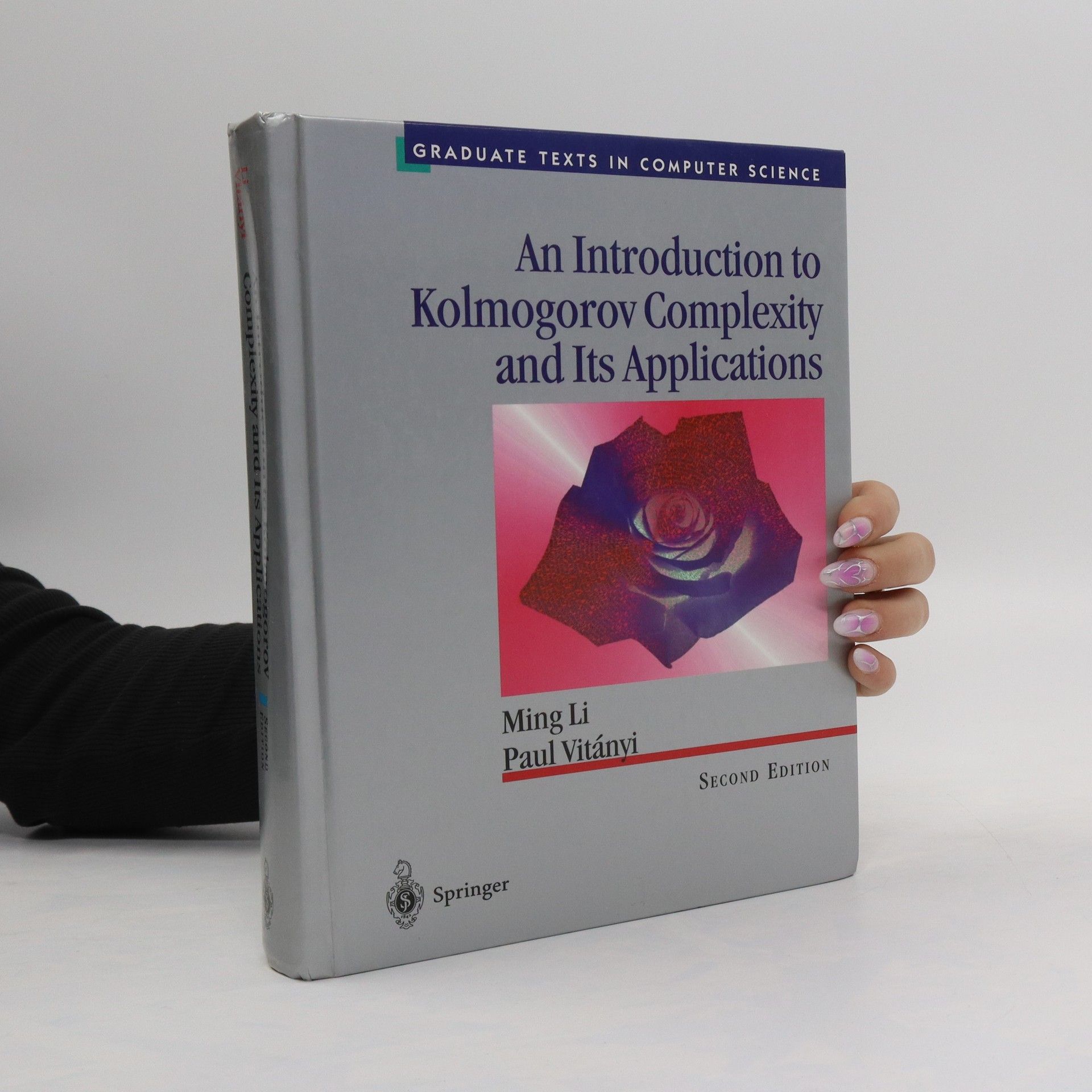Hanuman
- 40 Seiten
- 2 Lesestunden
Hanuman, a monkey hero, tries to save Princess Sita from the ten-headed demon king, Ravana






Hanuman, a monkey hero, tries to save Princess Sita from the ten-headed demon king, Ravana
Briefly, we review the basic elements of computability theory and prob ability theory that are required. Finally, in order to place the subject in the appropriate historical and conceptual context we trace the main roots of Kolmogorov complexity. This way the stage is set for Chapters 2 and 3, where we introduce the notion of optimal effective descriptions of objects. The length of such a description (or the number of bits of information in it) is its Kolmogorov complexity. We treat all aspects of the elementary mathematical theory of Kolmogorov complexity. This body of knowledge may be called algo rithmic complexity theory. The theory of Martin-Lof tests for random ness of finite objects and infinite sequences is inextricably intertwined with the theory of Kolmogorov complexity and is completely treated. We also investigate the statistical properties of finite strings with high Kolmogorov complexity. Both of these topics are eminently useful in the applications part of the book. We also investigate the recursion theoretic properties of Kolmogorov complexity (relations with Godel's incompleteness result), and the Kolmogorov complexity version of infor mation theory, which we may call "algorithmic information theory" or "absolute information theory. " The treatment of algorithmic probability theory in Chapter 4 presup poses Sections 1. 6, 1. 11. 2, and Chapter 3 (at least Sections 3. 1 through 3. 4).
Focusing on vibration phenomena, this book delves into fractional vibrations through the lens of linear vibrations characterized by frequency-dependent mass, damping, or stiffness. It provides a theoretical analysis relevant to various structures, particularly emphasizing applications in ship hulls. The exploration of these concepts aims to enhance understanding and application in engineering contexts.
Utilizing advanced mathematical techniques such as time series analysis and Fourier transforms, this book introduces fractal traffic modeling to enhance delay bounds in computer communication networks. It emphasizes improving service quality by integrating concepts like functional analysis and fractional order systems, alongside addressing noise factors. The focus on innovative computations aims to provide practical solutions for optimizing network performance.
The book offers an in-depth exploration of mono- and multi-fractal traffic theory, delving into long-range dependent time series and 1/f noise. It examines key concepts such as ergodicity and predictability in traffic patterns, alongside methodologies for traffic modeling and simulation. Additionally, it covers stationarity tests and measurement techniques for traffic, as well as anomaly detection in communications networks, making it a valuable resource for understanding complex traffic behaviors.
Focusing on the significance of vibration across various engineering disciplines, this book integrates conventional linear vibrations with contemporary fractional vibrations. It is divided into two parts: the first six chapters cover foundational concepts based on lectures for students at Zhejiang University, while the latter chapters delve into the author's research on fractional vibrations. This structured approach provides a comprehensive understanding of both traditional and modern vibration theories in engineering contexts.